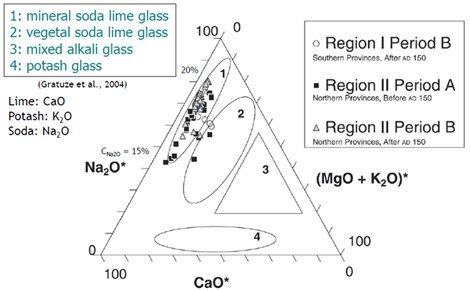Throughout history, glass of different chemical composition has been produced. Because the composition of glass varies with the period/area of origin, it is in theory possible to assess the authenticity or the provenance of historical glass artifacts on the basis of chemical analysis. As a result, the scientific analysis of glass is often used to support or disprove archaeological and historical assumptions about trade contacts between civilizations or the impact of material technology on society. In the course of the last decades, the AXES team has developed an expertise in archaeometric analyses of historical glass. This has been possible thanks to collaborations with archaeologists and glass conservators (Vrije Universiteit Brussel, Ghent University, University of Siena, Altare Glass Museum, UA Ontwerpwetenschappen, etc.). The analytical techniques used for this study are SEM-EDX, LA-ICP-MS and µXRF, with instruments in our labs or in particle accelarators.

A large number of glass finds ranging from the Roman age to the industrial era have been analyzed. Our publications focus in particular on three transition periods in glass history:
- Roman Imperial age - Evolution of glassmaking knowledge in peripheral areas of the Empire
- Medieval age - Evolution of glass recipes due to change of raw materials (natron versus plant ash)
- Pre-Industrial and Industrial age - Evolution of glass recipes due to technology transfer (e.g. movement of glassworkers from Italy to the Low Countries)